Why the French prevail in offshore racing
Published on November 8th, 2018
In offshore sailing races, skippers from France appear to perform disproportionately well in comparison to sailors from other countries.
This year’s Volvo Ocean Race was won by Chinese entrant Dongfeng Race Team, skippered by Charles Caudrelier of France. The current leader in the Golden Globe Race, a non-stop single-handed around the world event, is 73-year-old Frenchman Jean-Luc Van Den Heede.
Victors of the transatlantic Transat Race (formerly OSTAR) are largely French, as are those in the single-handed, non-stop global circumnavigation Vendée Globe. So too, are those in the Route du Rhum.
Before the November 4 start of the solo transatlantic 2018 Route du Rhum race, which had 123 boats commence the 3,542-nautical mile course between France and Guadeloupe, three renowned French race skippers – Loïck Peyron, François Gabart, and Sébastien Josse – all mentioned one individual as having provided a huge inspiration for today’s French offshore sailors: Éric Tabarly.
Peyron—victor of the last Route du Rhum transatlantic race in 2014, is racing again this year, but in a slower boat named Happy. Without sponsors, he is promoting Action Enfance to help neglected children in France. Standing on his boat, he spoke of history.
“For 30 years, most single-handed races around the world and transatlantic are won by French. Some details make a difference. Like Tabarly shaking hands with General de Gaulle in 1964 in front of official TV cameramen, in black and white. It started here, maybe. Suddenly, inspiration and the media followed, then sponsorship and sailors.”
Thirty-five year old Gabart, winner of the 2012-2013 Vendée Globe single-handed non-stop around the world race, also spoke of French sailing when we met aboard his 98.5-foot (30-meter) trimaran Macif.
“It’s quite difficult to explain why solo offshore sailing is so popular in France. There are thousands of people coming here, there will be millions of people who will follow this race. I think one of the reasons is probably Éric Tabarly, one of our top sailors who won a famous English race, the Transat [OSTAR], in the ‘60’s. He was really popular, close to the French people who were interested in this type of solo sailing venture. This is part of our culture.”
Aboard the Maxi Edmond De Rothschild Gitana trimaran, skipper Josse agreed.
“People dream to sail, because we have the history with Eric Tabarly, because we love prototypes.”
The story of Tabarly is that of a modest yet creative man who pursued his dreams. He was unphased by subsequent celebrity, and he helped crack the boundaries of what was then considered possible in offshore solo racing.
Tabarly won the single handed transatlantic Observer Single-Handed Trans-Atlantic Race (OSTAR) between Plymouth and Newport in 1964. He arrived two days earlier than the next contestant, (Sir) Francis Chichester, and 13 days faster than the 40 day winning time of the previous race.
Until then, few knew of Tabarly. For his victory he was awarded the Chevalier de la Legion d’Honneur by French President Charles de Gaulle. When the president then invited him for dinner at his residence, the Elysee Palace, Tabarly apologized but explained that he really needed to clean the hull of his boat during low tide. Such modest practicality only further endeared him to the French.
A naval officer, pilot and navigator, Tabarly spoke sparsely yet accomplished much. He won ample races, including the Sydney to Hobart race in 1967, the Falmouth to Gibraltar race in 1971 and the Los Angeles to Tahiti route in 1972. He again won the OSTAR race in 1976. In 1980 he set a record in a hydrofoil, crossing the Atlantic in just over 10 days.
He also penned books on sailing and sailboats and inspired others with his casual confidence, insisting that ‘Men need passion to truly exist.’ He was a reserved visionary who built a trimaran (Pen Duick IV) in the 1960’s to test higher race speeds. Orderly, modest and skilled, he heightened national pride by harnessing wild and powerful ocean forces.
His pluck, modesty, authorship, trim looks, media magnetism and polite manners captivated and inspired generations of French sailors. Unfortunately, during a night transit off the coast of Wales in 1998, Tabarly was knocked into the sea by a gaff rig, and subsequently drowned. A service was held for him at sea during which ships gathered in droves, and President Jacques Chirac solemnly attended on a military frigate.
In addition to Tabarly’s inspiration, other factors that continue to help French sailors (especially those from Brittany) prevail in offshore racing were explained to me by an American. John Niewenhous, one of two U.S. entrants in the current Route du Rhum race, was a career pilot, most recently flying 767’s commercially. After racing solo in the Bermuda One-Two from Rhode Island in the U.S. to St. George’s, Bermuda, he decided to enter the Route du Rhum.
“I thought it was the neatest thing, being solo offshore and doing distance. Coolest thing I had ever done. I think it’s too bad there aren’t more U.S. entrants in the Route du Rhum. But there’s not the training in the U.S. that is provided here in France.
“Kids here, if they’re living in a seaside town, that’s part of their school—how to sail. To continue that, there are other programs that get them into distance offshore racing, which develops their skills. That’s why there are so many professional French sailors.
“Also, compared to sailing in the U.S., it’s a lot rougher and tougher. Tremendous currents in the English Channel; lots of currents and waves. When the wind blows, it gets really rough. For the most part you don’t see that in New England. They have a 13-meter tide here. You can have five, six knots of current, which is unheard of in the U.S.”
Inspiration, conditioning and conditions have pushed the French to the forefront of modern offshore sail racing. As both sailor and pilot, Tabarly understood the attraction of navigating through both media. With the Route Du Rhum craft now hurling over the Atlantic Ocean toward the Caribbean, Tabarly’s legacy of bold trimaran experimentation lives on.
Source: Tom Mullen, Forbes.com
Event details – Ranking – Tracker – Facebook
Background: The 11th edition and 40th anniversary staging of the Route du Rhum-Destination Guadeloupe solo transatlantic race got underway on November 4. This iconic 3,542-nautical mile course will take the record entry of 123 skippers in six divisions from the start off the Brittany port of Saint Malo (France) to Guadeloupe.

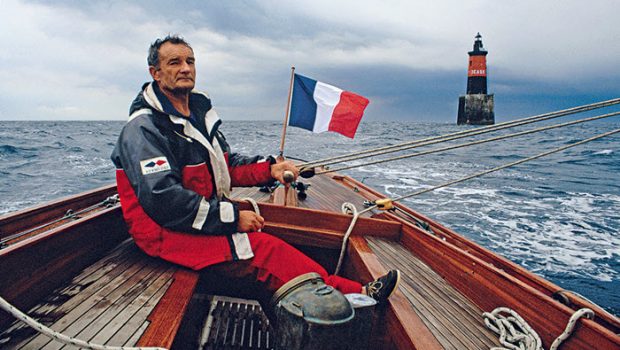


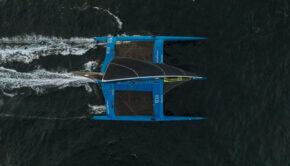
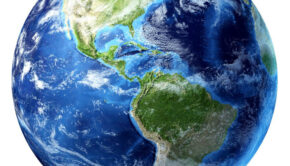
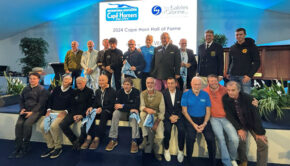
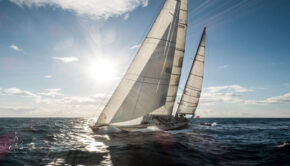
 We’ll keep your information safe.
We’ll keep your information safe.